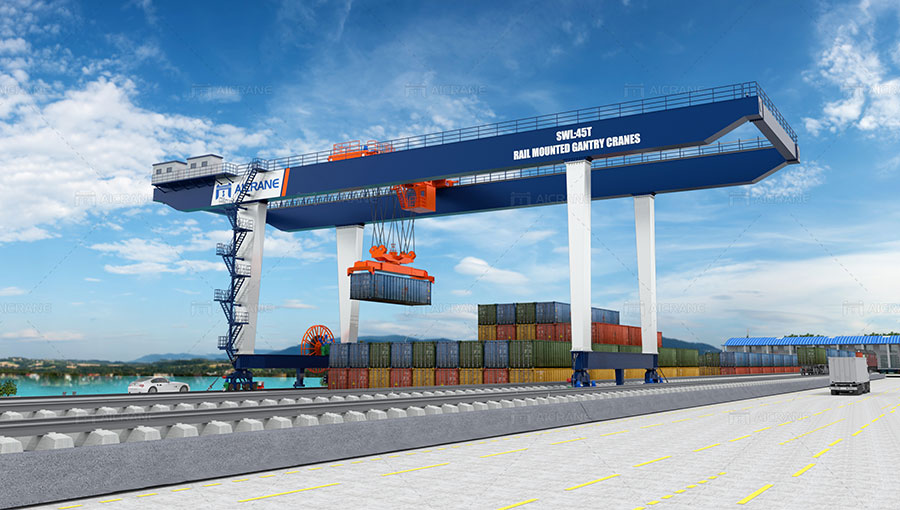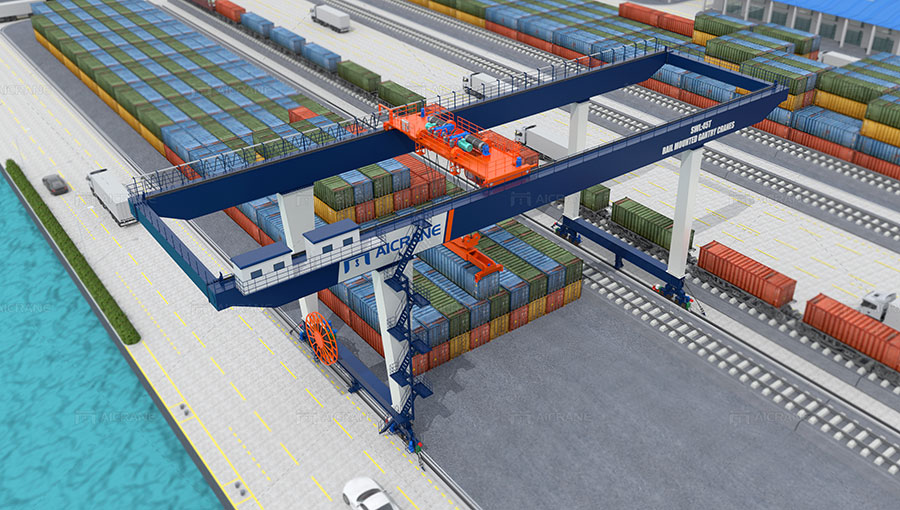Container gantry cranes are an integral part of port and terminal operations, as they are used for loading and unloading containers from ships and moving them to storage areas. The price of these cranes can vary significantly depending on a variety of features, each tailored to meet the specific demands of the port or terminal. Understanding how different crane features impact the price can help businesses make more informed decisions when purchasing a container gantry crane.
In this article, we will explore how various crane features, including capacity, design, automation, control systems, safety features, and customizations, influence the overall cost of container gantry cranes.

1. Lifting Capacity
Lifting capacity is perhaps the most significant feature affecting the container gantry crane price. The lifting capacity determines the maximum weight a crane can handle, and higher capacities usually come with a corresponding price increase. Gantry cranes are often designed to handle containers of different sizes and weights, so selecting the right lifting capacity for your operation is crucial.
For example, a standard container gantry crane designed to lift up to 40 tons will typically be less expensive than one with a lifting capacity of 100 tons or more. Heavy-duty cranes capable of lifting larger containers or multiple containers at once often incorporate larger components, stronger materials, and more robust design features, all of which drive up costs.
Additionally, cranes with larger lifting capacities may require stronger power sources, more advanced hoisting mechanisms, and better load distribution systems, further increasing the overall price.
2. Span and Height
The span and height of a container gantry crane are also important features that influence price. Span refers to the distance between the crane’s legs, which determines the width of the area the crane can cover when handling containers. Cranes with a wider span are generally more expensive due to the additional materials, design complexity, and engineering required to ensure structural integrity.
The lifting height, which refers to the maximum vertical distance the crane can lift a load, is another critical factor. Cranes with higher lifting capabilities often require additional mechanisms, such as taller structures and more powerful hoisting systems, to accommodate large container ships. As with span, the greater the lifting height, the higher the gantry crane price will be, due to increased structural complexity and the need for higher-quality materials to maintain safety and durability.
3. Automation and Control Systems
The level of automation incorporated into a container gantry crane can significantly impact its price. Cranes with basic manual controls are typically less expensive than those with advanced automation features, such as automated container positioning, remote operation, and integrated safety systems.
Automated cranes are designed to optimize operational efficiency and safety, reducing human error and increasing throughput. These cranes may include features such as:
- Automated stacking and retrieval systems: To allow for better container organization and faster unloading.
- Auto-load/unload features: To help automate the lifting and loading process, saving time and labor costs.
- Remote control systems: Which provide operators with more flexibility and control over the crane’s movements.
All these advanced control features involve sophisticated software, sensors, and communication systems, which contribute to higher upfront costs. Additionally, automated cranes may require regular software updates, training for operators, and ongoing maintenance, adding to their total cost of ownership.

4. Safety Features
Safety is a critical concern when designing container gantry cranes. The introduction of advanced safety features can significantly impact the crane’s price but also ensures that the crane operates within the highest safety standards.
Some common safety features include:
- Anti-sway systems: These help to reduce swinging of the load, ensuring smoother and more controlled operations, particularly when handling heavy containers. Anti-sway technology can increase the cost of a crane due to the need for specialized sensors and control systems.
- Overload protection: This system prevents the crane from lifting more than its rated capacity, ensuring the safety of both the equipment and operators.
- Wind speed sensors and alarms: Container gantry cranes often operate in challenging outdoor environments, where high winds can pose a significant risk. Cranes equipped with wind sensors can detect hazardous conditions and alert operators to prevent accidents.
- Emergency stop systems: A critical safety feature in case of a malfunction or when immediate action is required to prevent injury or equipment damage.
While these features improve the safety and reliability of the crane, they come at an additional cost due to the technology and systems required to support them.
5. Materials and Build Quality
The materials used to construct a container gantry crane are a major factor in determining its price. Heavy duty gantry crane designed for harsh working conditions, such as those used in port environments, requires high-quality materials to withstand corrosion, wear, and heavy loads.
Common materials used in crane construction include steel, reinforced steel, and high-strength alloys. Cranes operating in coastal or marine environments may also be treated with anti-corrosion coatings or designed with materials that are resistant to saltwater exposure. These specialized materials add to the cost of the crane but are necessary for ensuring longevity and durability.
Additionally, the build quality of the crane—including the precision of its components, the complexity of its design, and the level of craftsmanship—affects both the price and the overall performance of the crane. Cranes built with higher-quality materials and better craftsmanship will generally cost more upfront but offer lower maintenance costs over the long term.
6. Customizations
Container gantry cranes can be highly customized to meet the specific needs of a port or terminal operation. Customizations can include adjustments to lifting height, span, mobility (e.g., rail-mounted gantry crane vs. rubber tyred gantry crane), control systems, and other operational features.
While customizations offer the advantage of a crane designed specifically for your needs, they also contribute to higher prices due to the additional engineering, design work, and material costs involved. Some common customizations include:
- Extended reach and height: Custom modifications for special container sizes or handling requirements.
- Hybrid power options: Some cranes may be equipped with hybrid or electric power systems to reduce fuel consumption and emissions, which can increase the crane’s price.
- Weatherproofing for specific environmental conditions: For cranes used in extreme climates, custom weatherproofing features may be necessary, raising costs.
The ability to tailor the crane to specific operational needs is valuable for businesses but will require a larger initial investment.
7. Maintenance and After-Sales Support
Another aspect that impacts the cost of a container gantry crane is the level of maintenance and after-sales support provided by the manufacturer. Cranes that come with comprehensive warranties, routine maintenance packages, and ongoing technical support will have a higher initial cost but can save businesses money over time by reducing the likelihood of breakdowns and prolonging the crane’s service life.
Additionally, some manufacturers offer extended training programs for operators, ensuring that the crane is used efficiently and safely, which can also contribute to the overall price.
Conclusion
The price of a container gantry crane is determined by a range of factors, from basic design elements like lifting capacity and span to advanced features such as automation, safety systems, and customizations. Businesses looking to invest in a container gantry crane should carefully evaluate their operational needs, budget, and long-term goals to determine the features that will provide the best return on investment.
By understanding how various features impact crane prices, port and terminal operators can make more informed decisions that balance cost with functionality, ensuring they select the right crane for their specific requirements.